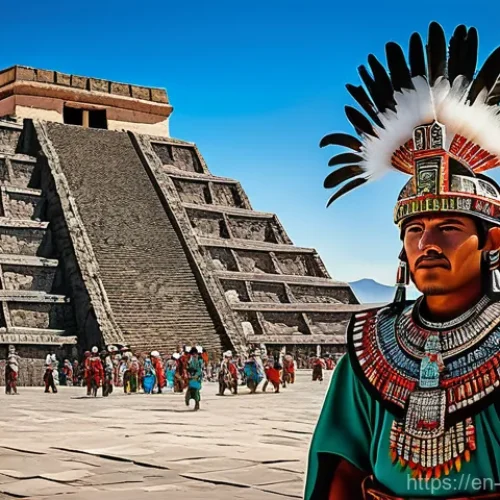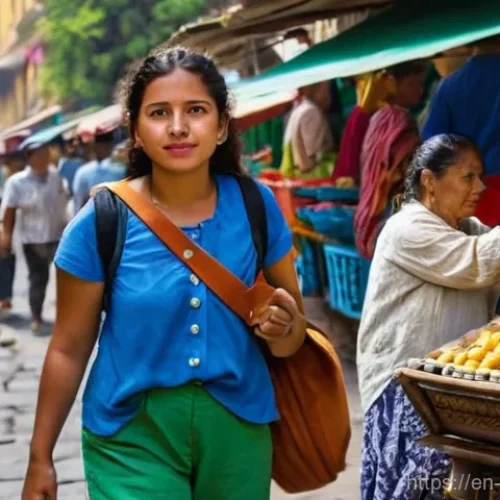Contents
The Hidden Truth: What Really Caused the Aztec Empire’s Sudden Collapse
Contents
Mexico’s diverse crime landscape includes violent crimes like homicide, kidnapping, carjacking, and robbery, often linked to organized crime and drug cartels, particularly in border areas and certain states. Petty crime, such as pickpocketing and theft, is also frequent in tourist and non-tourist areas, as are various scams. Some regions, including parts of Guerrero, Tamaulipas, Zacatecas, and certain border areas, carry higher travel advisories due to increased violence and criminal activity. Tourist areas, while generally safer, can still experience incidents of violent crime and scams. To prevent becoming a victim of crime, travelers are advised to exercise increased caution and maintain awareness of their surroundings. Key prevention methods include avoiding displaying signs of affluence, such as expensive jewelry or clothing, and keeping valuables secure and out of sight. When it comes to transportation, it’s recommended to use authorized taxis from official stands or ride-sharing apps like Uber or Didi, rather than hailing taxis on the street. For inter-city travel, using first-class buses and toll roads (cuotas) is generally safer than free roads (libre) or traveling at night. Financial safety tips include using ATMs inside banks or malls during the day to avoid skimming devices, and carrying smaller denominations of cash. Travelers should also be wary of common scams, such as fake taxis, corrupt police, and individuals soliciting money with sob stories. It’s crucial to research destinations thoroughly, inform trusted contacts of travel plans, and register with one’s embassy. If confronted by armed criminals, it is advised not to resist. Mexico Safety Secrets: Your Essential Guide to Crime Prevention.

Contents
The Hidden Truth: What Really Caused the Aztec Empire’s Sudden Collapse
Contents
Mexico’s diverse crime landscape includes violent crimes like homicide, kidnapping, carjacking, and robbery, often linked to organized crime and drug cartels, particularly in border areas and certain states. Petty crime, such as pickpocketing and theft, is also frequent in tourist and non-tourist areas, as are various scams. Some regions, including parts of Guerrero, Tamaulipas, Zacatecas, and certain border areas, carry higher travel advisories due to increased violence and criminal activity. Tourist areas, while generally safer, can still experience incidents of violent crime and scams. To prevent becoming a victim of crime, travelers are advised to exercise increased caution and maintain awareness of their surroundings. Key prevention methods include avoiding displaying signs of affluence, such as expensive jewelry or clothing, and keeping valuables secure and out of sight. When it comes to transportation, it’s recommended to use authorized taxis from official stands or ride-sharing apps like Uber or Didi, rather than hailing taxis on the street. For inter-city travel, using first-class buses and toll roads (cuotas) is generally safer than free roads (libre) or traveling at night. Financial safety tips include using ATMs inside banks or malls during the day to avoid skimming devices, and carrying smaller denominations of cash. Travelers should also be wary of common scams, such as fake taxis, corrupt police, and individuals soliciting money with sob stories. It’s crucial to research destinations thoroughly, inform trusted contacts of travel plans, and register with one’s embassy. If confronted by armed criminals, it is advised not to resist. Mexico Safety Secrets: Your Essential Guide to Crime Prevention.
Contents
Mexico boasts exceptional solar radiation, with 70% of its territory receiving over 4.5 kWh/m2/day, making it one of the most promising countries for solar photovoltaic development. The cost of installing solar energy has significantly decreased, making it cheaper to generate electricity via photovoltaic technology than to purchase it from the national utility, CFE. This has led to a surge in popularity, driven by benefits such as lower energy bills, reduced reliance on fossil fuels, and a smaller carbon footprint. The Mexican government actively promotes sustainable energy through subsidies and incentives for solar panel installation, including tax deductions for both corporations and individuals. Homeowners with high electricity consumption can particularly benefit, as solar panels can help them avoid expensive “tarifa DAC” rates and “freeze” their electricity price for the lifetime of their system. Mexico has ambitious clean energy targets, aiming for 35% of electricity from clean sources by 2024, and President Claudia Sheinbaum’s administration aims for a 45% renewable power grid by 2030. As of 2024, solar power contributes 7.6% of Mexico’s total electric power generation with 11.99 GW of installed capacity. The country has vast potential for further solar development, with estimates suggesting 30 GW of PV capacity by 2030. Solar energy is utilized in various ways, from large-scale photovoltaic plants like Villanueva in Coahuila to residential and commercial rooftop installations. Distributed generation, particularly small-scale residential installations, is rapidly increasing, accounting for about 37% of Mexico’s solar fleet. The regulatory framework supports net metering and net billing, allowing users to generate their own electricity and receive credit for surplus energy fed back into the grid. Future initiatives also include mandates for battery energy storage systems in new solar installations to enhance grid stability. Unlock Mexico’s Sun: Your Guide to Solar Power Savings and a Brighter Future

The Hidden Truth: What Really Caused the Aztec Empire’s Sudden Collapse
Hey there, history buffs and curious minds! I’ve always been captivated by the rise and …

Beyond Tacos and Tequila: Launching Your Online Business in Mexico
Hey there, fellow digital adventurers! Have you ever dreamt of running your online empire from …

Unlock the Secrets of Hollywood’s Mexican Titans: Salma Hayek, Guillermo del Toro, and Diego Luna
Hey there, amazing readers! If you’re anything like me, you’ve probably spent countless hours binging …

Mexico’s Healthcare System: Unveiling the Surprising Truths
Stepping into the vibrant culture of Mexico, whether for a dream retirement, an adventurous digital …

The Hidden Truth: What Really Caused the Aztec Empire’s Sudden Collapse
Hey there, history buffs and curious minds! I’ve always been captivated by the rise and …

Beyond Tacos and Tequila: Launching Your Online Business in Mexico
Hey there, fellow digital adventurers! Have you ever dreamt of running your online empire from …






